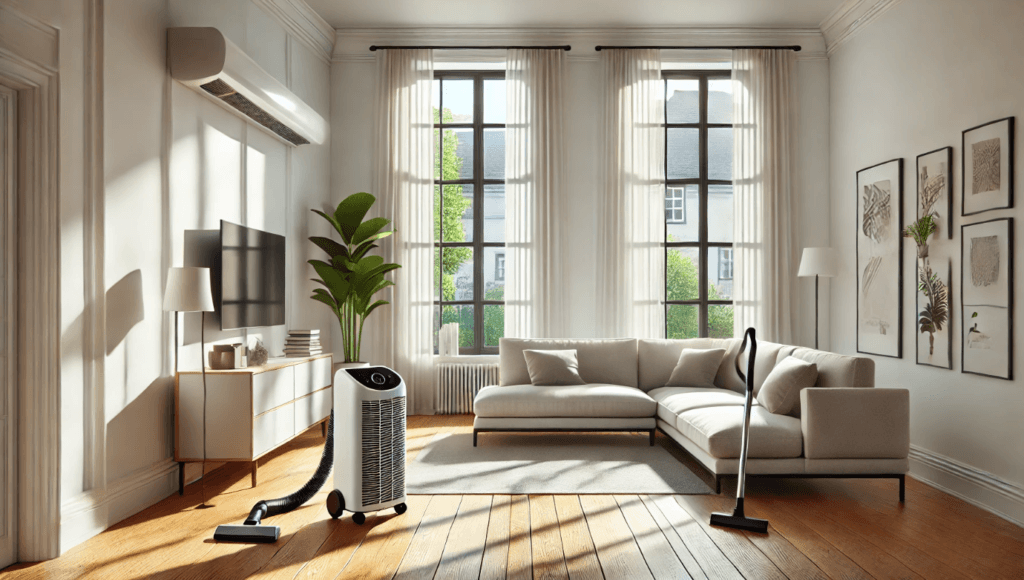
Allergy-Proof Your Home: A Guide for Homebuyers
When purchasing a new home, comfort and health should be top priorities. If you or a family member suffers from allergies or asthma, the home environment plays a critical role in managing these conditions. As professional home inspectors, we often encounter homes where simple adjustments could significantly reduce allergens. Here are actionable tips to help allergy-proof your home and create a healthier living space.
Why Allergy-Proofing Matters
Allergens such as dust, pollen, mold, and pet dander can accumulate in homes, triggering sneezing, coughing, and other health issues. A proactive approach ensures that your new home remains a haven rather than a health hazard. Follow these steps to minimize allergens and improve indoor air quality.
1. Keep Your Air Clean
Replace Air Filters Regularly
The HVAC system is the lungs of your home, circulating air throughout every room. Replace air filters every three months—or more frequently if you have pets or live in a high-pollen area. Look for filters with a high MERV rating for optimal allergen capture.
Invest in Air Purifiers
Portable air purifiers or whole-house systems can effectively remove airborne allergens. Opt for HEPA-certified units for maximum efficiency.
Clean Air Ducts
Schedule regular duct cleanings to prevent the recirculation of dust, mold, and debris. This step ensures a consistent flow of clean air.
2. Address Surfaces and Soft Materials
Dust and Vacuum Regularly
Dust mites thrive in carpets, rugs, and upholstery. Use a vacuum equipped with a HEPA filter to trap allergens instead of releasing them back into the air.
Wash Bedding Weekly
Dust mites love bedding. Wash sheets, pillowcases, and blankets in hot water weekly. Use hypoallergenic mattress and pillow covers for added protection.
Remove Wall-to-Wall Carpeting
Hard surfaces like hardwood, laminate, or tile are easier to clean and don’t trap allergens like carpets. For a softer feel, opt for washable area rugs.
3. Control Moisture and Mold
Maintain Proper Humidity Levels
Mold thrives in humid conditions. Use a dehumidifier to keep indoor humidity between 30-50%.
Fix Leaks Promptly
Inspect plumbing, roofing, and foundations for leaks. Moist areas are breeding grounds for mold and mildew, which can aggravate allergies.
Clean and Inspect Bathrooms
Ventilate bathrooms after showers and clean grout lines to prevent mold growth. Exhaust fans are essential for reducing moisture.
4. Minimize Exposure to Outdoor Allergens
Seal Doors and Windows
Weather stripping and caulking can prevent pollen, mold spores, and other outdoor allergens from entering your home.
Keep Windows Closed
During allergy season, resist the urge to open windows. Instead, rely on your HVAC system or air purifiers for fresh air.
Avoid Hanging Clothes Outside
Pollen clings to fabric. Dry clothes indoors or in a dryer to avoid bringing allergens inside.
5. Make Smart Material Choices
Choose Hypoallergenic Furnishings
Select furniture with smooth surfaces that are easy to clean. Upholstered items should be covered with allergy-proof materials.
Install Easy-to-Clean Window Treatments
Avoid heavy drapes that trap dust. Opt for washable curtains or blinds.
Eliminate Scented Products
Synthetic fragrances in candles, cleaning products, and air fresheners can irritate allergies. Choose fragrance-free options instead.
6. Pet Considerations
Groom Pets Regularly
If you have pets, bathe them frequently to reduce dander. Keep them out of bedrooms and off furniture to minimize exposure.
Use Pet-Specific Cleaning Tools
Vacuuming tools designed for pet hair and dander can help maintain a cleaner home.
7. Stay on Top of Maintenance
Declutter Your Home
Clutter collects dust. Keep surfaces clear and organized to make cleaning more efficient.
Inspect and Clean Dryer Vents
Lint buildup in dryer vents can harbor allergens. Clean these regularly to improve air quality and reduce fire risk.
Smoke Outdoors
If smoking is permitted, keep it outside. Tobacco smoke worsens indoor air quality and can embed allergens into furniture and carpets.
Conclusion: A Healthier Home Starts Here
Taking the time to allergy-proof your home is an investment in your family’s health and well-being. Whether you’re buying a new home or maintaining your current one, these steps can significantly reduce allergens and improve indoor air quality.
Looking for more insights? At Executive Home Inspections, we provide detailed reports that help homebuyers understand the potential risks and benefits of their new property. Contact us today to schedule an inspection and ensure your home is as safe and healthy as possible.
If you’re considering a home purchase in Edmonton or surrounding areas, don’t take chances. Contact Executive Home Inspections today to schedule your professional inspection.
Ready to Schedule Your Edmonton Home Inspection?
Call Us or Book Online—we’re here to help you make a confident, informed decision.
Click here to learn more about home inspection issues in Edmonton, St. Albert, Spruce Grove, Leduc, Sherwood Park, Fort Saskatchewan and surrounding areas. So if you’re buying, selling, or renovating, we’ll give you the clarity you need to protect your investment.





